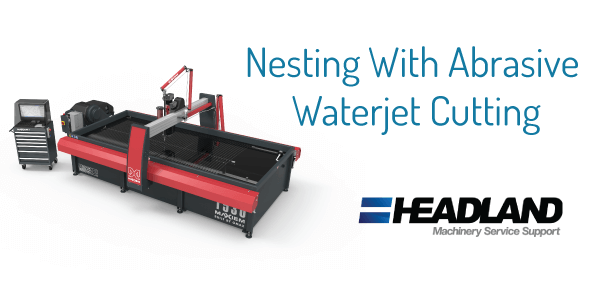KraussMaffei boosts Mexico’s agricultural industry with sustainable logistics solutions in packaging
Discover how KraussMaffei helped transform eco-friendly packaging in Mexico’s logistics sector—read the full case study now.
Welcome to Headland Technology Client log in
Whether you’re after a machine, spare part, power tool, or need to book a service call Headland will help you find the right solution in a timely manner.
Fill out the form below and the relevant expert will be in touch with you shortly.
No matter how you cut a part, there’s always going to be scrap material. Ideally, there would be no scrap, and for every sheet of material you buy, you’d use it all up.
However, with abrasive waterjet cutting machines, there is always some waste material. This waste is minimised by nesting.
Nesting is packing as many parts into a fixed sheet size as possible, leaving minimal leftover material. For example, if you’re cutting squares and you’ve got a rectangular sheet of material, you’ll be using nearly 100%.
More often than not, parts aren’t simple squares, so it’s important to use different methods of nesting to maximise your materials.
Array nesting is used when you need to cut multiples of one part only. This is the simplest form of nesting, and depending on the shape of your part, it can result in an impressive material utilisation rate.
Easily done without any nesting software, all you need to do is copy and paste the part at a specified distance apart.
Repeat horizontally and vertically as necessary – and in some cases, you can get a tighter nest by offsetting the second row of parts.
Automated nesting allows you to take multiple part shapes and sizes and rotate them all individually to get as tight a fit as possible on to the target sheet.
This does require third party software due to intense calculations, but it brings good results.
With automated nesting, you can cut hundreds of parts from one single sheet, both maximising production and minimising waste, which simplifies the recycling of scrap material.
Both methods ensure maximum material usage and help lower your cost per part.
For more information or to speak with an expert, get in touch.
Whether you’re after a machine, spare part, power tool, or need to book a service call Headland will help you find the right solution in a timely manner.
Fill out the form below and the relevant expert will be in touch with you shortly.
